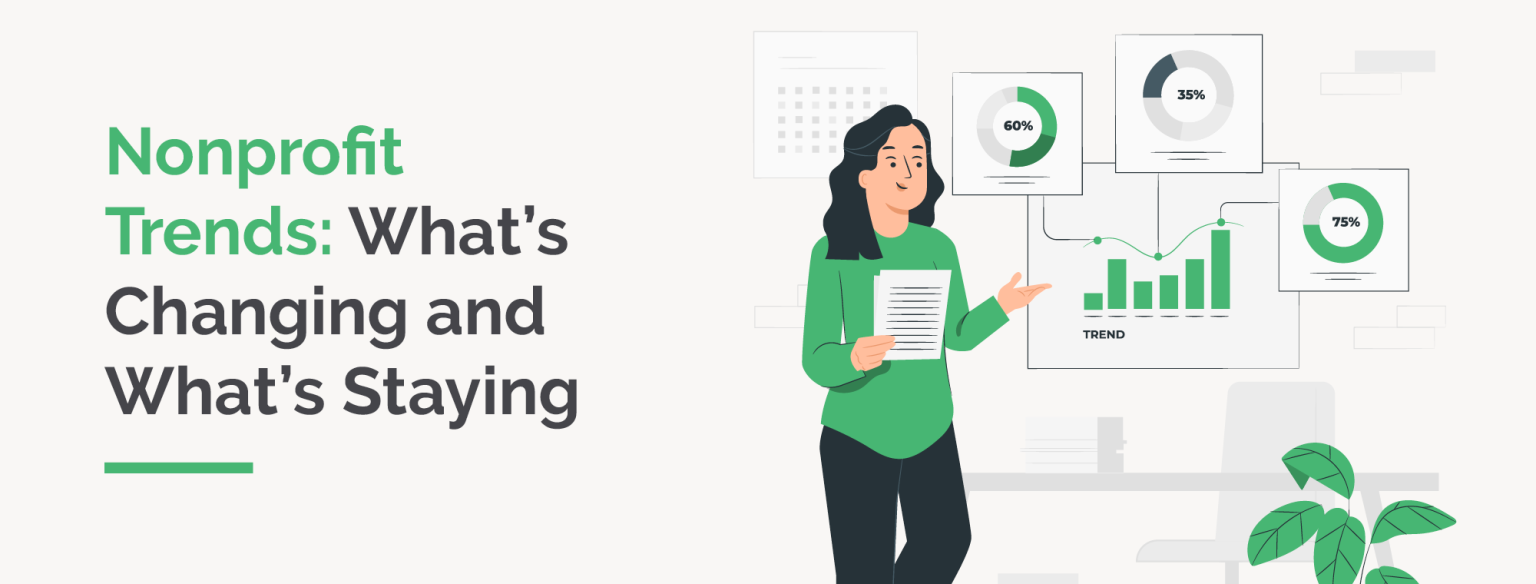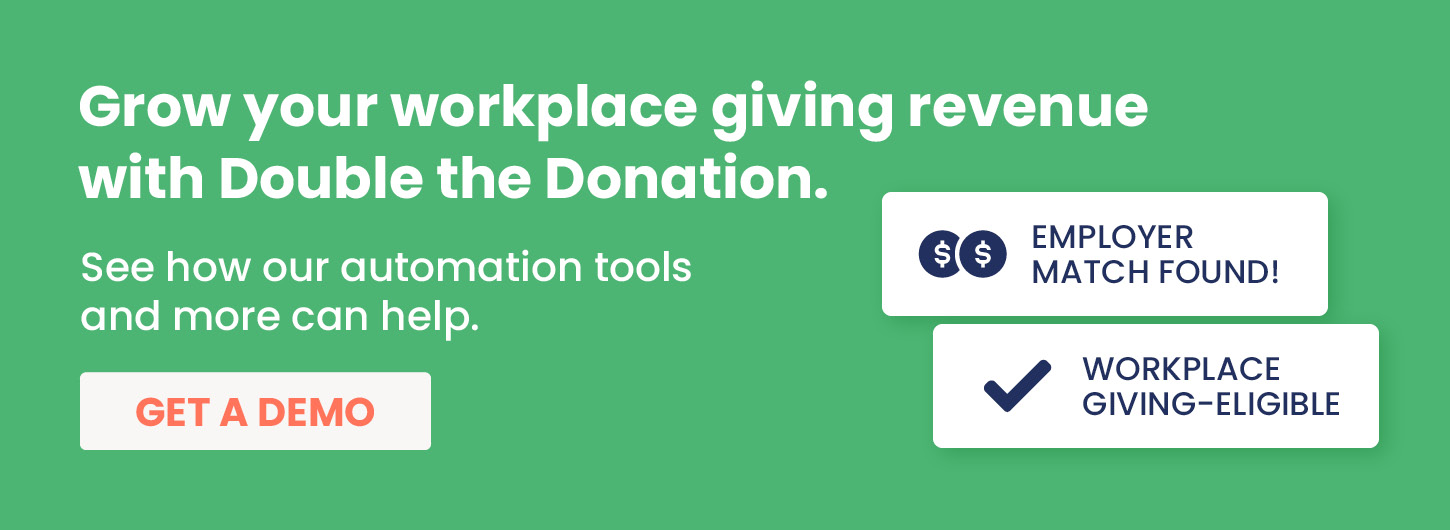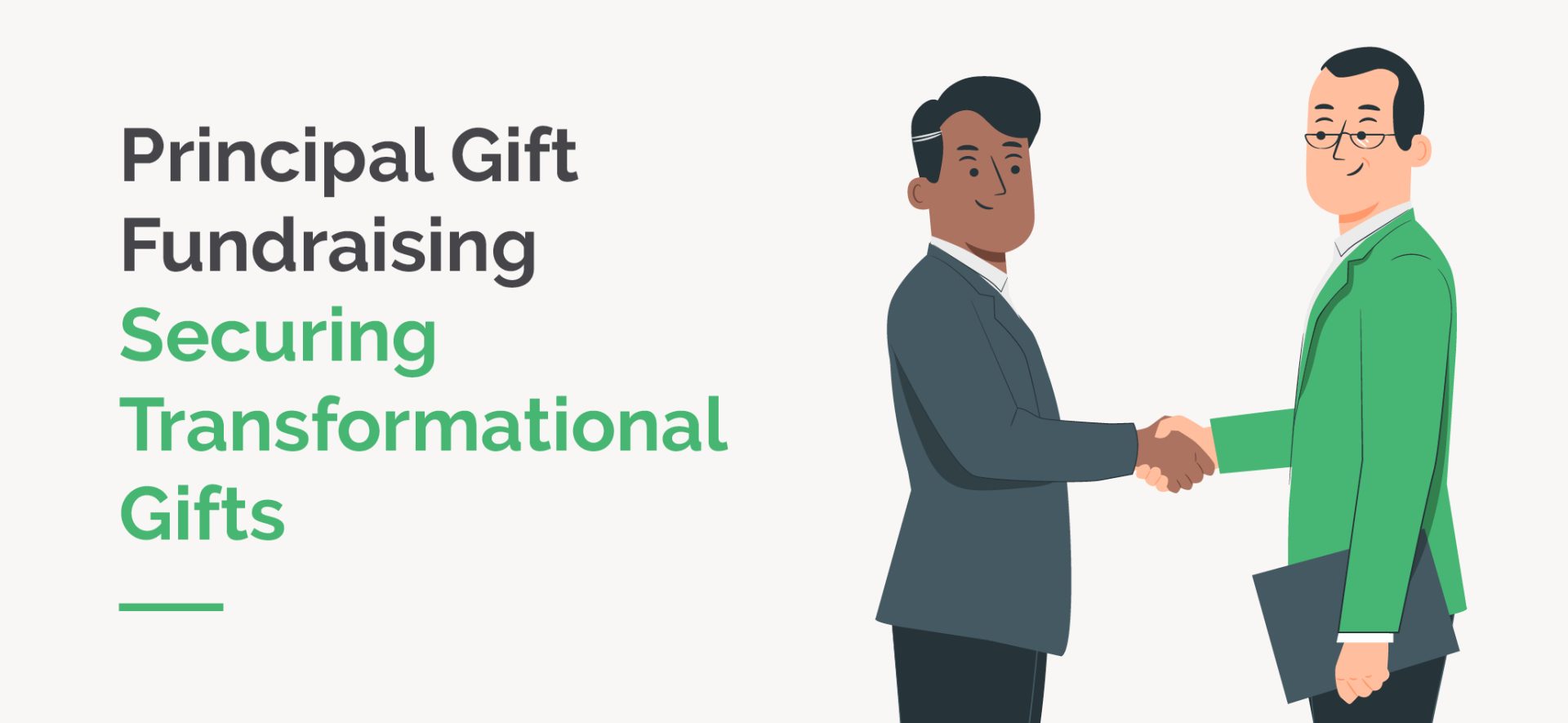2026 Nonprofit Trends: What’s Changing and What’s Staying
The nonprofit sector is highly dynamic, and whether it’s philanthropy or marketing, everyone wants to know what’s the next big thing. While no nonprofit can predict the future, and sudden world events, economic shifts, and technological advancements can suddenly rock the boat, nonprofits that do see what’s coming are better prepared to navigate challenges and act on opportunities.
In this guide, we’ll explore upcoming changes we believe 2026 will bring, evidence for our predictions, and what we believe is here to stay. Let’s get started!
Change: AI Technology Takeover
The buzzword of today is AI. In the past few years, ChatGPT saw faster growth than TikTok, and this success prompted technological giants like Microsoft, Google, and Apple to invest heavily into their own AI tools, kicking off the AI arms race we see today.
While there have been some hiccups in recent launches of AI tools, there is little question that AI is set to impact nearly every sector, including nonprofits.
Why We Think It’ll Happen
Along with the investments from major players in technology, there is a clear sign that AI has potential staying power in the nonprofit world: convenience. Nonprofits are regularly stuck trying to figure out how to do more with less, and AI may be the speedy, cost-effective solution many organizations have been looking for.
Plus, AI has multiple functions, some of which have been part of popular nonprofit technology solutions, like prospect screening software, for some time now. Specifically, there are two types of AI to be aware of: generative and predictive.
- Generative. Tools like ChatGPT that are trained on databases and use that information to generate content are generative AI. These AI write emails, create illustrations, and compose music. Some nonprofit technology vendors have rolled out new generative AI solutions to help with tasks like donor communications.
- Predictive. AI that analyzes datasets for trends and patterns to predict future outcomes is predictive AI. These have long existed in the nonprofit space and have helped countless nonprofits predict donor behavior, identify major giving prospects, and improve fundraising.
Along with AI, automation in general is on the rise in nonprofit technology. For example, you might assume the matching gift process as it currently stands is already as optimized as possible, but recent advances in matching gift software, such as auto-submission, have streamlined it to the point where all donors need to do to submit a matching gift request is click a button.
To learn more about matching gifts, check out this video from our team at Double the Donation:
Staying the Same: Hybrid Work
AI hasn’t completely replaced humans, and nonprofits still need to retain and invest in their teams to find success. The question of how to create work environments employees want has also already been answered since 2020 with 9 in 10 employees preferring hybrid work.
When implemented well, hybrid work is a win for employees who appreciate the flexibility and a win for employers who can appreciate the cost savings in renting office space. However, it’s also possible for hybrid teams to become disconnected, suffer from delays in communication, and experience work-life balance breakdowns.
A few ways you can continue maintaining a positive hybrid work experience include:
- Showing appreciation. Employees who feel appreciated are more likely to stick around, whether they’re in the office or at home. Because you can’t see your team’s efforts in person, consider implementing a peer-to-peer recognition strategy. Rather than only managers recognizing their teams, employees can recognize each other in this system. This means more of your team is on the lookout for those going above and beyond, so more team members are recognized for their hard work. For example, you might send out eCards applauding employees who demonstrate your organization’s values.
- Hosting cultural events. The hybrid environment can sacrifice a sense of workplace culture and camaraderie. Solve this issue by hosting accessible cultural events, such as virtual events and in-person activities on days when you know several team members are coming into the office. Consider promoting events in advance to encourage team members to work from the office on the same day and connect with one another.
- Sharing work-life balance tips. For those just entering the workforce or experiencing hybrid work for the first time, it can be easy to feel like you’re at work all the time. Help these team members by creating a cheat sheet for how to work well at home, such as setting up a designated work space, limiting distractions, and establishing clear on-the-clock hours.
When it comes to implementing hybrid work, consider what tasks at your nonprofit can be successfully done remotely, what tasks benefit from an in-office environment, and how you can provide flexibility. For example, you might require all employees to come into the office at least two days a week but let them choose which days.
Change: Increased Focus on Donor Acquisition
The total number of donors is down. In 2000, approximately 66% of U.S. households gave to charity, and in 2024, it dipped to just below 50%.
This has been linked to several factors, such as decreases in church attendance logically leading to decreases in giving to religious organizations, as well as economic uncertainty causing donors of all economic levels to tighten their belts.
In reaction to this news, nonprofits everywhere are sounding the alarm. The coming years are also expected to mark a changeover in which generations are primary donors—switching from Boomers and Gen X to Millenials and Gen Z—and many nonprofits are scrambling to find ways to engage these donors.
Why We Think It’ll Happen
Ultimately, this development means nonprofits everywhere are brainstorming ways to improve donor acquisition and engagement.
Primarily, these efforts are likely to focus on mid-level donors, who are the main group nonprofits feel this change is impacting. Mid-level donors are the everyday supporters whose donations aren’t breaking records, but together, their contributions add up to make a significant difference for nonprofits, especially those with few major donors.
With the talk around donor acquisition, a few ideas that have emerged include:
- Local community building. Ultimately, your local community is your biggest fan. Establish a strong base of supporters by building connections with potential donors who see your nonprofit in action. Invite them to office and project tours, host local events, and tailor your marketing strategy to local donors.
- Highly personalized content. Gen Z grew up with a heavily algorithm-based internet, and many of these new donors feel put off by generic messaging strategies. Pay attention to your donors’ interests to share personalized content these donors are likely to engage with.
- Low-cost support options. With a decrease in giving due to economic concerns, nonprofits want mid and low-level donors to help out without worrying about their own finances. For example, many matching gift programs will match gifts as low as $25, meaning supporters can double their modest donations at no additional cost.
If your nonprofit is likely to acquire new donors, consider your current audience. What platforms do they use? Do those platforms still exist? Would your donors be willing to network on your behalf? Why or why not? Consider whether you should look for more supporters like the ones you currently have or if you need to pivot your strategy to reach new audiences entirely.
Staying the Same: Focus on Major Donors
Reports from fundraising initiatives like GivingTuesday indicate that the total number of donors is decreasing but the total amount donated is staying relatively the same. This means that fewer donors are giving overall, but those who donate are doing so in higher amounts.
As such, major donors, who have always been incredibly important to nonprofits, are now even more important than before. If you have yet to start a major donor program, a few steps you can take include:
- Investing in prospect research tools. Major giving programs need to know which donors have the potential to become major donors and of those prospects, which ones are the most likely to actually do so. Wealth screening and prospect research tools can help you evaluate your donor base and make strategic decisions about how to allocate your resources.
- Assessing your network. Does your nonprofit already know any prospective major donors? Or do you know someone who may know a potential major donor? One of the first places you should look when searching your network for major donors is your board. Ask them to reach out to friends and family to fundraise on your behalf and facilitate introductions.
- Training major gift officers. Major gifts are such an essential part of nonprofit funding that many organizations have entire teams dedicated exclusively to stewarding major donors. Talk with your fundraising team to see if any members are interested in training or adapting their skill sets to focus on major donor outreach and cultivation.
Remember that focusing on major donors and acquiring new donors should not be an either/or situation. With limited resources, you may be able to only focus on one of these initiatives at a time. However, think of each as an investment in your nonprofit’s future fundraising capabilities and plan to expand in both directions when time and resources allow.
Change: Politicization of Nonprofits
Part of being a 501(c)(3) organization and soliciting donations requires having a nonpartisan cause. While nonprofits can participate in advocacy campaigns, they are barred from endorsing specific political candidates or parties.
That being said, politicization of nonprofit causes appears to be happening whether nonprofits like it or not. From backlashes to environmental efforts and DEI initiatives, nonprofits now need to walk a careful line of remaining nonpartisan in an increasingly partisan world.
Why We Think It’ll Happen
Like with AI, the writing is on the wall when it comes to increasing political divisions. Some nonprofits, like charity: water, have taken a tongue-in-cheek approach to this phenomenon and attempted to find common ground by insisting that everyone, regardless of political opinions, can agree with their cause of expanding clean water access.
Of course, many nonprofit professionals are nervous about alienating their supporter base, and even charity: water’s poll on hard-hitting questions like whether pineapple belongs on pizza is cited as brave by some philanthropic experts.
However, events are already in motion with a new lawsuit challenging the prohibition on nonprofits endorsing political candidates and a 2017 executive order protecting political speech. While as of today, nonprofits can and should still remain nonpartisan, charitable organizations also need to be realistic that the causes they champion—whether it’s education, artistic liberty, environmental protection, or healthcare—likely aren’t.
Staying the Same: Community-Based Support
As discussed, your local community is your nonprofit’s main base of support, and organic community-driven movements are also where real change starts. If you’re concerned about public support for your cause, shore up donors, volunteers, and partners in your hometown before panicking.
A few ways you can firmly establish your nonprofit in your community and earn local support include:
- Completing a needs assessments survey. To serve your community, you first should know what your community needs. Conduct a needs assessment survey to understand issues your community faces, why those issues exist, and what solutions are practical given your resources.
- Working with other local organizations. The more friends your nonprofit has in local businesses and other nonprofits, the more help you’ll have if you ever want to launch a major project, run into trouble, or want to expand. Try hosting corporate volunteer groups, launching join-projects with other nonprofits, and arranging mutually beneficial sponsorship opportunities.
- Participating in local advocacy. While fears about politicization are valid, your nonprofit can still influence local legislation. For example, you might raise awareness about new bills related to your cause or issues facing your community and ask supporters to call their local representatives.
Ultimately, politicization is an issue of today, but it’s also an issue of the future as nonprofits are still barred from participating in politics. Currently, your main focus should be on tailoring your marketing strategy to appeal to your donors’ values, rather than asking them to take a hard stance on anything other than supporting your cause.
Change: Working With Influencers
With the internet, individuals have diffused into niche communities. This has pros and cons for marketers. While it’s easier than ever to get your message out there, it’s also hard to advertise in spaces that have a large audience.
One solution nonprofits have found is influencer marketing. These micro-celebrities have audiences that revolve around them and their content. Nonprofits that partner with these online influencers can have their cause promoted directly to potential supporters from a source that their audience is highly likely to trust.
Why We Think It’ll Happen
With the explosion of TikTok, nonprofits overwhelmingly turned to influencer marketing in 2023 with approximately half of nonprofits working with influencers. Additionally, only 17% of these were paid partnerships, meaning the majority of this promotion was entirely free.
While the fate of TikTok is currently in question, influencer marketing has exploded on other platforms, particularly Instagram. Additionally, the size of these influencer audiences also varies widely as many nonprofits work with smaller influencers (some even with less than 10,000 followers). However, when it comes to influencer marketing, less is not necessarily worse, as these smaller audiences tend to be more targeted, and thus might have higher quality leads than in an audience twice as big.
Staying the Same: Peer-to-Peer Networking
Maybe your nonprofit lacks influencer connections, but you can still get passionate supporters to fundraise on your behalf with peer-to-peer networking.
While individual supporters may not have audiences as large as popular influencers, the principles behind influencer marketing also apply to peer-to-peer fundraisers. Namely, the majority of people trust word-of-mouth marketing above all other forms of marketing. This means that if someone you know and trust recommends a product or service, you’re far more likely to look into it than you would if only shown ads from that company.
This also applies to nonprofits. Rather than an organization they haven’t heard of before asking for a donation, new supporters are far more likely to respond positively to donation requests that come from friends and family.
A few ways you can launch an effective peer-to-peer campaign include:
- Investing in peer-to-peer software. Peer-to-peer software gives your peer-to-peer fundraisers the tools they need to collect donations and share their stories with friends and family. While various peer-to-peer software solutions have different tools, in general these platforms provide supporters with the ability to create custom donation pages. Supporters can add their personal stories to these donation pages, so their friends and family know they are donating specifically to them.
- Hosting a referral program. Create a program that encourages supporters to promote your cause to others. For example, Peace Wind America launched an eCard campaign on Father’s Day that encouraged supporters to send the father figures in their lives fun eCards that celebrate the holiday and draw attention to World Refugee Day.
- Recruiting peer-to-peer ambassadors. Many peer-to-peer campaigns allow anyone to sign up in order to get as many people fundraising for your nonprofit as possible. However, to give your campaign its best chance for success, you might also ask a few passionate, influential supporters in your community to consider becoming peer-to-peer ambassadors.
With donor numbers decreasing, influencer and peer-to-peer marketing are key ways to grab new donors’ attention. By leveraging these connections, you can get your foot in the door with their audiences and ramp up donor engagement efforts to retain some of these new supporters.
More Nonprofit Trends
While not every trend will hit your nonprofit, it’s worth taking precautions and making plans to act in the event that change does arrive on your doorstep. Keep an eye on developments in the nonprofit sector by reading nonprofit news sources and staying in touch with other nonprofit professionals.
To continue your research into developments in the nonprofit world, check out these resources:
- 8 Trends in Corporate Philanthropy: How to Tap In. Staying up to date on changes in philanthropic behavior can help your nonprofit better negotiate partnerships with businesses. Discover where corporate giving programs are headed in the next few years.
- Must-Have Types of Nonprofit Software for Your Org. Software is advancing at a rapid pace. Learn what tools your nonprofit needs to keep up with the crowd.
- Matching Gift Databases: What Nonprofits Should Know. Exciting things are happening in the world of matching gifts. Explore how databases can power your nonprofit.


















